Top 10+ Best One Product Shopify Stores Examples
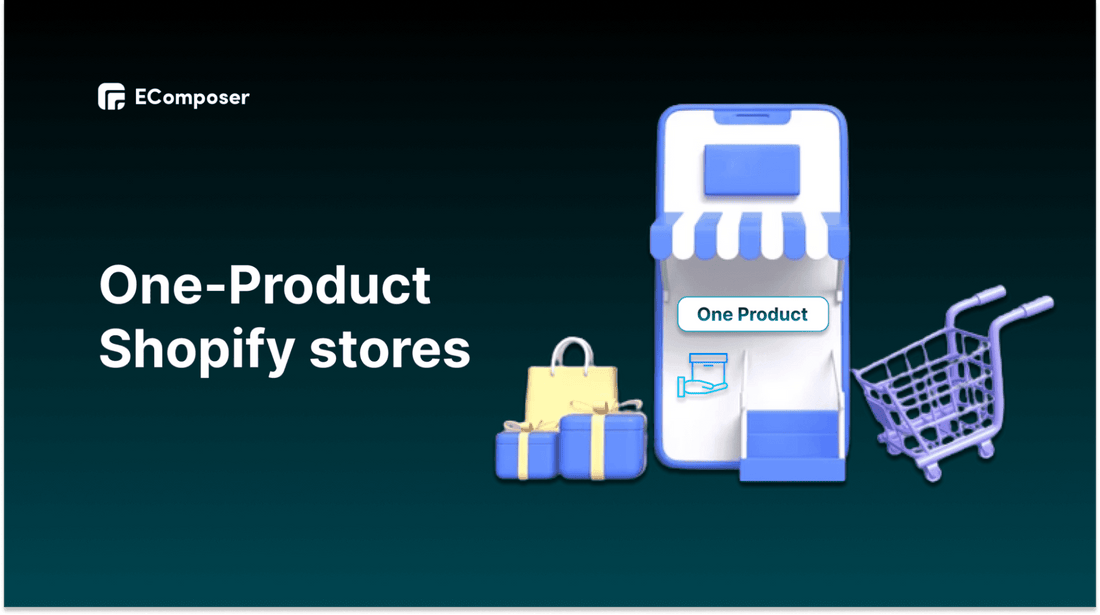
Table Of Contents
A one-product Shopify store is an eCommerce site that sells a single item created to market one main product, but can sell various versions of the same product, such as size or color. This style of business concentrates all marketing and branding exercises on a single item, which may result in an increased conversion rate and reduced customer decision fatigue.
Intending to completely change the sleep industry, in April 2014, Casper opened a store with only one item - a mattress. The idea was straightforward: make the nicest mattress you can, sell just one model, get it to you quickly, and give it a 100-day trial period. The first month generated sales of $1 million, proving that it was effective. This company has expanded to 120 workers, raised $70 million in venture funding, and achieved $100 million in cumulative sales within just two years.
This is one of the most well-known instances of a one-product store that is profitable.
Realizing the potential of One Product store, people started concentrating more on client demands and expanding into unexplored specialized markets rather than creating a general store with hundreds of items across all categories. Hence, Shopify stores with just one product are a growing trend in the future.
This blog will discuss the key points of a One Product Shopify store which are the definition, the advantages of having one store and the great examples with best practices for further reference. Let’s explore!
What are One Product Shopify stores and their advantages/ disadvantages?
One-product Shopify stores specialise in the sale of one specific product, which can have a strong and focused brand and ease of marketing, but can lack diversification and scalability. The benefits are that it is less overwhelming to the customer with less time spent on setting up, there is a clear brand message, efficient marketing, and enhanced conversion rates. The drawbacks may include a small customer base, increased reliance on the performance of one product, possible problems in scaling, and susceptibility to changes in the market. Before we discuss the one-product Shopify store examples, let's first discuss what it is and why it has become so popular.
What is a One Product Shopify store?

(image source: bokksu.com)
One Product Store run by Shopify that only sells one particular item or service. But occasionally, the term "One Product Shopify store" can also refer to a website that sells a single product in various forms.
Advantages of One-Product Shopify Stores
- Focus on One High-Value Product: Concentrating on a single item makes it easier to perfect quality and create a smoother shopping experience that drives customer satisfaction.
- Streamlined Marketing: With no competing products, you can build a clear, targeted marketing strategy and control your brand message.
- Higher Sales Potential: Limiting choices reduces confusion, helping customers buy with confidence. It also allows you to invest more in customer service and retention.
- Stronger Branding: A one-product store makes it easier to craft a powerful, consistent brand message and tailor the shopping journey for your audience.
- Easier to Manage: Operations, inventory, and customer service are simpler to handle, letting you focus fully on optimizing your product and experience.
Disadvantages of One-Product Shopify Stores
- All Eggs in One Basket: Your entire business relies on one item. If it loses traction, underperforms, or faces supply issues, you have no fallback.
- Limited Upselling & Cross-Selling: With only one product, you miss out on bundles, add-ons, and “you may also like” opportunities that boost average order value.
- Scaling Challenges: Niche or seasonal products can hit sales ceilings quickly, making growth harder unless you expand or diversify.
- Marketing Fatigue: Promoting the same product repeatedly risks ad fatigue, for both customers and you, without constant new angles.
- Trust Barriers: Shoppers may doubt one-product stores that look “drop-shippy.” Strong branding, design, and social proof are crucial to build credibility.
Top 15 outstanding One Product Shopify store examples
Successful examples of One Product Shopify stores are Neos SmartHome (innovative security camera), Kulala (melatonin-boosting lamp), Cookie Chips (gourmet cookies), Death Wish Coffee (high-intensity coffee), and Seattle Cider Company (cider flavors) due to their good brand storytelling, easy-to-use website design, persuasive product imagery, and ability to leverage their one-product focus to fulfill a particular market segment.
1. Seattle Cider

(image source: seattlecidercompany.com)
What they do well: What they excel at: Seattle cider exploits it to their advantage by selling a lifestyle and not a beverage, an artisanal one. Small-batched and hand-crafted products are their marketing statistics that make them outstanding in the market compared to mass-market products, yet to customers who prefer genuine products.
Marketing Strategy: They base their marketing strategy on regional pride by promoting apples that are grown in Washington in order to develop an emotional connection. They apply high-end branding to appeal to the high-quality customers who will not require discounts to purchase their products.
Website Design: The site employs a unique scroll-based, single-page design, which makes the site immersive and narratively driven. Its rustic image with nature photography and warm colors is the perfect way to emphasize the Pacific Northwest background of the brand.
Brand-building approach: They build their brand in an open manner as a boutique winery. Their visual step-by-step description of the process of cider making makes the brand seem very sincere and friendly, and educates the customers about the value of the product.
Key takeaways: A Place and process-based brand story can elevate any product to extremely high heights. Whatever you are selling, whether it is geographic, cultural, or artisanal, tie a bigger story to it.
2. Brew Blue Tea

(image source: brewbluetea.com)
What They Do Well: Brew Blue Tea impresses with the value it offers immediately. The site is all about being pure and simple, fast to convey the message of what the product is, why it is good, and what makes it special among health-conscious shoppers.
Marketing Strategy: Their marketing strategy is a zero confusion model, and they have designed the homepage in such a way as to anticipate and answer customer enquires about the ingredients, safety, and benefits proactively. Powerful social evidence and a clear money-back policy are employed to redirect visitors into the conversion.
Website Design: The design is receptive to the philosophy of the product: clean, minimal, and impactful. The abundant use of white space provokes a natural and plausible feeling, and visuals are dedicated to the natural ingredients of the product and do not clutter.
Brand-Building Approach: In addition to the product, they post wellness and skincare information on their blog. This makes the brand an expert in holistic health, and it develops both SEO value and customer loyalty.
Key Takeaway: Clear, benefit-first communication builds trust quickly. Your homepage must educate, build confidence, and convert without overwhelming the visitor.
3. Kulala land

(image source: kulalaland.com)
What They Do Well: Kulala Land has mastered visual branding. The site instantly transports its visitors to a playful and colorful world, and the product is not sold to the visitors but joy itself.
Marketing Strategy: They are based on emotional resonance and personality to appeal to young parents and gift purchasers with a feel-good style. Warmth and curiosity are triggered by visual narration and an entertaining atmosphere.
Website Design: The site adopts deliberate, maximalist colors that are aligned throughout all of the elements. The design is user-friendly and it presents credibility images such as testimonials and the story of the founder without losing its lighthearted nature.
Brand-Building Approach: Kulala provides the brand with a human face using its founder and mission. The approachable, happy, and friendly tone is evident throughout all the elements, and this generates an emotional connection with customers.
Key Takeaway: You should not be afraid of making a daring branding as long as it is in tune with the personality of your product. Powerful emotional attachment is an effective point of difference that may sell
4. Snooze

(image source: getsnooze.com)
What They Do Well: Snooz is marketing its white noise machine as a lifestyle product to the universal issue of bad sleep. They actually sell the idea of more sleep and a new life, not only a tech device.
Marketing Strategy:

(image source: getsnooze.com)
Their marketing is based on results, with the emphasis on such benefits as the quality of sleep and the peace of mind. They create enormous credibility through the addition of social proof, such as customer reviews, media coverage, and influencer quotes.
Website Design: The web design is clear and soothing with its soft pictures and harmonious colors, which help it to reinforce its emotional pledge. The trust badges and reviews are placed in the strategic locations close to buy buttons to reassure the customers during the stage of making the purchase.
Brand-Building Approach: Snooz creates its brand upon empathy and trust. They are aware of the pain points of their audience (stress, fatigue) and echo that point in everything they post, which creates a very strong sense of community.
Key Takeaway: Sell an outcome, not the functionality. Position your product as a life solution that will enhance the everyday life of your customer and support it with social evidence, whooping.
5. Bokksu

(image source: bokksu.com)
What They Do Well: Their Strengths are that Bokksu is changing the Japanese snacks into a culture. They make a consumable good into a giftable, sharable brand by making it more about storytelling and discovery.
Marketing Strategy: They rely on experience marketing and attract customers with a museum-like experience that offers more than snacks. Their subscription service guarantees a stable income and the lifetime value of their customers.

(image source: bokksu.com)
Website Design: There is a solid and consistent visual branding that uses the signature orange to create recognition. Its product photography is elegant, balanced with light Japanese-inspired images that point to the cultural background of the brand.
Brand-Building Strategy: Bokksu is a cross between a trade and a selection of narratives, allowing it to develop long-term customer loyalty. Each delivery is an experience, and this will prompt customers to post on social media.
Key Takeaways: Have a niche, make it rich. Discovery or culture.e If your product can be hooked to either discovery or culture, make it not just a simple exchange, but a memorable experience.
6. Neos

(image source: shops.neos.co.uk)
What They Do Well: Neos actually positions its SmartCam as a system, as opposed to a single device. Such positioning helps the product to seem larger and more valuable, and sell an all-in-one product of safety and peace of mind.
Marketing Strategy: The home page creates curiosity by creating a smart surveillance ecosystem and displaying the product after the introduction. This narrative cycle: solution, product, software, proof- takes an unconvinced consumer through their intuitive buying flow.
Website Design: A polished, "Apple-like" design with high-contrast colors and 3D mockups conveys professionalism and tech credibility. The layout guides the user’s eye to key actions and information.
Brand-Building Approach: Neos develops its brand as a member of the current smart home trend. They position them as slick and secure,e and easy to use by not using any technical language, instead using clean visuals and easy narratives to tell.
Key Takeaway: Have your product be a component of a bigger lifestyle or ecosystem. Design and messaging: Use design and message to make the customers visualize how it easily blends into their lives.
7. PillowPup

(image source: pillowpup.com)
What They Do Well: PillowPup’s brand is built entirely on emotion. It precisely targets pet lovers by selling a personalized, sentimental keepsake rather than just a custom pillow, tapping into the powerful bond between people and their pets.
Marketing Strategy: The brand sounds and looks fun and friendly, with a light and light-hearted tone, using emojis, user-generated content. The advertisement focuses on the fact that the product can be gifted and the personal story of each pet.
Website Design: It is cozy and motivated by cute images of pets. The emotional appeal of the product is further supported by icons, illustrations, and whimsical touches that make the experience a joy and an engaging one.
Brand-Building Approach: PillowPup follows the playful, emotional branding strategy. It is not formal, is aimed at building a fun, personal relationship, and at the same time, emphasizing the quality of products and a transparent production process.
Key Takeaway: When your product appeals to the heart, capitalize on it. The use of casual language, hum, or user-generated content best serves personalized or gift-based businesses.
8. PipCorn

(image source: pipsnacks.com)
What They Do Well: Pipcorn is an heirloom snack company that relies on the core values of sustainability, heritage, and community. The brand narrative surrounding the ancient varieties of seeds helps them to stand out among the competitors in the mass market.
Marketing Strategy: The point is obvious, Pipcorn is a movement, not a snack. They emphasize the fact that purchases would help in seed preservation and family farming, making a simple purchase awareness among consumers.
Website Design: Bright colors, illustrations, and smooth micro-animations make the site feel dynamic and modern. The visuals create a sense of delight while communicating the brand's fun and ethical ethos.
Brand-Building Approach: Pipcorn infuses a low-cost snack with cultural and ethical relevance. Through transparency and charming visuals, they've created a brand that appeals to both children and health-conscious adults.
Key Takeaway: If your product has a "deeper why," make it the center of your story. Use compelling visuals to create delight and strong copy to build conviction.
9. State of Kind

(image source: stateofkind.com)
What They Do Well: State of Kind embraces a "less is more" philosophy for its single skincare product. This minimalist approach turns simplicity into a key selling point that aligns with conscious, modern consumers.
Marketing Strategy: The brand markets calmness, purity, and intentionality. By avoiding aggressive sales tactics, they create a perception of sophistication and quality, letting their brand philosophy do the selling.
Website Design: The design is defined by understated elegance. A spacious layout, soft colors, and minimal text reflect the product's purity and invite visitors to explore slowly, mirroring a meditative skincare ritual.
Brand-Building Approach: State of Kind crafts an aspirational identity around self-care as an intentional ritual. Their philosophy is the brand, inviting customers into a mindset of mindful consumption.

(image source: stateofkind.com)
Key Takeaway: Less can be more as long as it conforms to your product promise. Use good values to make a soft, but assured voice through your design, language, and content.
10. Death Wish Coffee

(image source: deathwishcoffee.com)
What They Do Well: Death Wish Coffee is anchored on a single memorable statement, namely, The World's Strongest Coffee. Its unapologetic, aggressive brand name does a lot to capture a certain market segment.
Marketing Strategy: All the marketing aspects reinforce the main promise of intensity. The skull-and-crossbones motto and the gothic-style design help to strengthen the rebellious and daring position of the brand.
Website Design: The dark, rugged look is just right for their target market. The site is straight and sales-driven as it uses crisp headlines to communicate its unique selling proposition immediately.
Brand-Building Approach: Death Wish markets adrenaline and attitude, and not just coffee. With the exploitation of a lifestyle of intensity and self-expression, they have managed to create a huge cult based on one powerful concept.
Key Takeaway: When you have one strong position that is different, then push it to the extreme. Having an extreme niche is a strong means to create a cult-like following.
How to make your one-product Shopify store Successful
To make a one-product Shopify store successful, focus on a strong brand identity, professional visuals, and clear product benefits to attract your target niche. Drive sales with targeted marketing campaigns, including content and influencer marketing, combined with excellent customer support and trusted social proof like testimonials. Finally, use email marketing and subscription options to encourage repeat business and secure recurring revenue.
1. The Product Must Be Exceptional
Your single item can't just be "good"; it needs to be a winner. An ideal product:
- It is difficult to find, which generates exclusivity.
- Makes a particular problem a solution or makes a strong desire.
- Has perceived high value, and so the price becomes justified.
- It is not difficult to follow and too enticing to pass up on an impulse purchase.
2. Credible Social Proof is Essential
With only one product, trust is paramount. Shoppers rely on others' experiences to feel secure.
- Prominently feature customer reviews, ratings, and testimonials. Positive feedback validates your product's quality and builds the confidence needed to make a sale.
3. The Product Description Must Sell
You have one chance to tell your story, so make your copy count.
- Showcase benefits instead of simply detailing features. Show how the product addresses customer pain points or enhances their daily life.
- Be Specific and Credible: Avoid empty buzzwords like "world-class." Instead, use specific data, numbers (as digits, like "7", not "seven"), and concrete details to build credibility.
4. High-Quality Visuals are Critical
First impressions are formed in milliseconds. Your website's design must immediately capture attention and showcase your product.
- Optimize for Mobile: Make sure your website is fully optimized for mobile devices, where most customers start their search.
- Use a Compelling Hero Image: Feature a large, high-quality banner image of your product at the top of your homepage with a clear call-to-action button (e.g., "Shop Now"). This immediately shows visitors what you sell and what to do next.
Learn how to build a Product Shopify Store here.
Must-Have Tools and Smart Tips to Run a One-Product Shopify Store Successfully
In order to successfully operate a one-product Shopify store, invest in high-quality and professional product photos and videos to demonstrate the benefits of the product, develop a strong brand image, and design a user-friendly, fast, and easy-to-navigate web design with a simple check-out system. It will also require that you have a solid marketing strategy, such as SEO and content marketing, and deliver proactive and excellent customer service to make sales and build loyalty.
Recommended Tools for One-Product Stores
These tools can save you time, improve performance, and help you convert more visitors:
1. Page Builder:
Use a powerful drag-and-drop tool like EComposer to design high-converting product pages or landing pages. It allows you to add sticky call-to-action buttons, countdown timers, FAQs, testimonials, and more without needing to code.
2. Review & Social Proof Apps:
Apps like Loox or Judge.me let you collect and display customer reviews, photo reviews, and user-generated content. This is especially important since your one product needs to build instant trust.
3. Upsell & Bundle Tools:
With only one main product, you can still offer smart bundles, upgrades, or complementary items using apps like EcomRise. You can also create volume discounts, accessories, or service add-ons.
4. Email & SMS Marketing:
Tools like Klaviyo or Omnisend help you build abandoned cart flows, welcome emails, and post-purchase campaigns to keep your audience engaged and returning.
5. Analytics & Behavior Tracking:
Use platforms like Hotjar or Microsoft Clarity to understand how visitors interact with your site, where they click, how far they scroll, and where they drop off. This helps you improve your user experience.
6. Speed & SEO Optimization:
Use the app to help compress images, boost site speed, and improve mobile performance, factors that are critical for one-product stores.
Key Elements Every One-Product Store Needs
Here’s what your store should have to increase conversions and customer trust:
- A clear and compelling product headline and subheadline
- A detailed product description that focuses on solving a real problem
- Good quality images and videos of the use of the product.
- A beneficial hero section on the home page.
- Testimonials, customer reviews, and trust badges.
- Minimal distractions and a simplified and quick checkout process.
- See through policies of return and shipping policy to decrease reluctance.
- Social proof, like real user photos or video testimonials
- Mobile-optimized layout with fast loading speed
- Exit-intent popups or email capture to grow your list
How to Reduce or Overcome the Disadvantages of a One-Product Store
- Diversify Your Traffic: Avoid relying on one ad platform. Attract customers from multiple sources, including SEO, social media, email marketing, and influencer collaborations.
- Create Upsell Opportunities: Increase order value by offering discounted bundles (e.g., two-packs), relevant accessories, extended warranties, or digital add-ons.
- Combat Marketing Fatigue: Keep your ads fresh by regularly updating visuals, testing new marketing angles for different audiences, and running limited-time offers to create urgency.
- Plan for Smart Growth: Once you have traction, expand your product line vertically. Introduce premium versions, new variations, or complementary items to give loyal customers more to buy while staying true to your niche.
The Future of the One-Product Shopify Store Model
The future of a one-product Shopify store model is bright, as it makes customer experience simple, allows it to focus on marketing, and allows the brand to gain deep knowledge of one niche, which results in faster sales and higher conversions. The way to succeed in the future is to combine the new technologies, such as AR/VR, AI personalization, blockchain, and voice commerce, focus more on sustainability, and community development.
Key Future Trends Supporting This Model:
- E-commerce and Niche Market Growth: The overall expansion of e-commerce creates more opportunities for highly specialized brands to capture dedicated audiences without competing directly with large retailers.
- Power of Social Commerce: Platforms like TikTok and Instagram are ideal for single-product stores. A focused product makes it easier to create a compelling brand story, generate viral content, and partner with influencers.
- Technology as a Lever:
AI Personalization: AI allows even small stores to offer sophisticated, personalized customer experiences, optimizing marketing and increasing conversion rates.
Immersive Shopping (AR/VR): Technologies such as virtual try-ons are creating shopper trust and reducing the distance between online shopping and offline shopping, which are essential when selling a single product.
- Sustainability as a Differentiator: Customers are more and more associated with brands that have a high ethical and environmental rating. A one-product store can successfully develop its whole brand narrative on the basis of sustainable sourcing, open manufacturing, and green practices, and generate a strong competitive edge.
Wrapping up
By concentrating on just one product, you can highlight all the unique features that make it stand out. You can improve your marketing material, customer service, and product value, and establish yourself as an authority in the market you target when there are no distractions from a wide variety of products, like those found in general stores. We hope the preceding effective examples might serve as an inspiration for you while you build your One Product Shopify business.


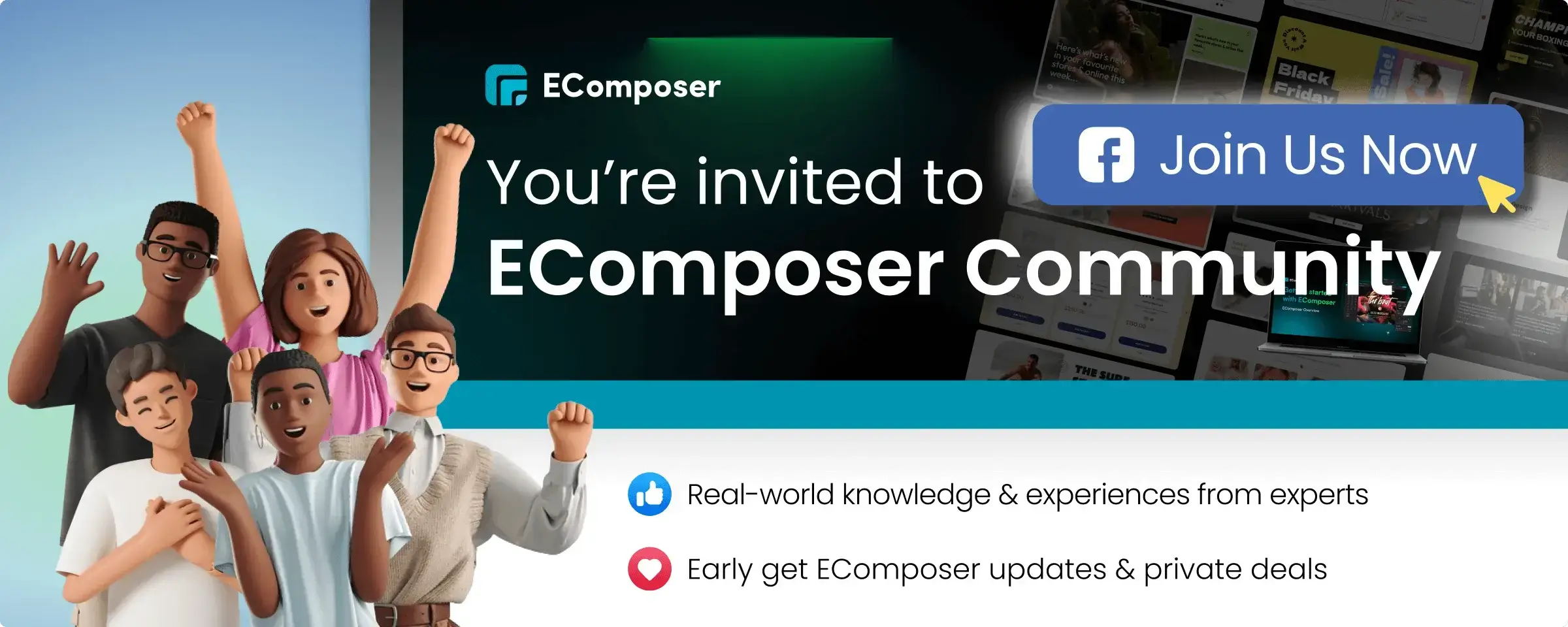







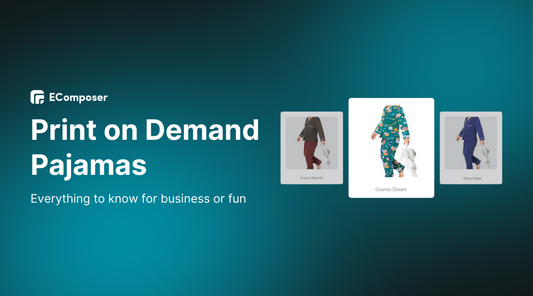
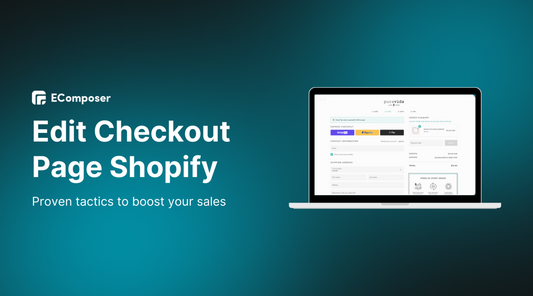
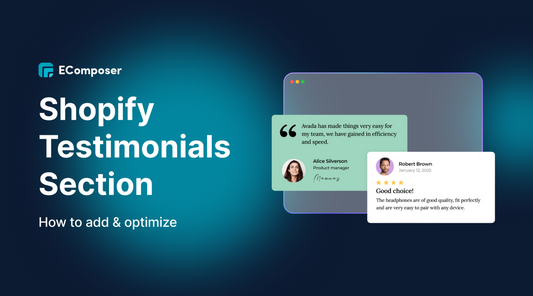
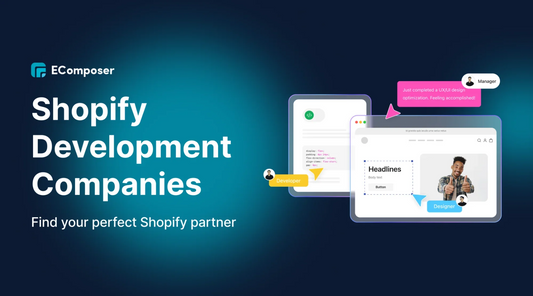







0 comments